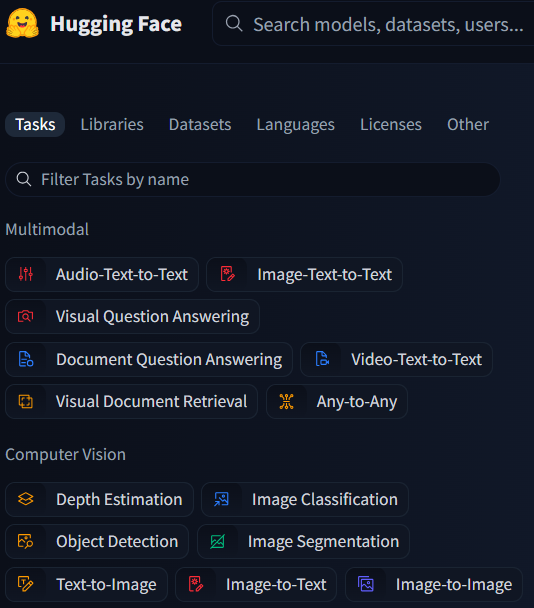Table of Contents
How to Choose the Right AI Model from Hugging Face
With over 400,000 pre-trained models on Hugging Face, picking the best one for your project might feel like searching for a needle in a haystack. But don’t worry — this guide will walk you through a clear, practical method to find the most suitable model, no matter your machine learning task.
Whether you’re working with text, images, or speech, this step-by-step guide will help you make smarter decisions using filters, evaluations, and fine-tuning strategies to save time and improve results.
What Is Hugging Face and Why Is It So Popular?
Hugging Face is a powerful open-source platform known for its large collection of AI models and tools. Originally famous for its NLP (Natural Language Processing) models, it has expanded to cover Computer Vision, Audio Processing, and even Multimodal AI tasks. Developers and researchers love Hugging Face because it:
- Offers access to over 400,000 pre-trained models
- Supports various frameworks like PyTorch, TensorFlow, and JAX
- Hosts collaborative tools like the Model Hub, Datasets library, and Inference API
The user-friendly interface, powerful APIs, and strong community make Hugging Face the go-to hub for AI development.
Why It’s Important to Choose the Right Model
Selecting the right model is key to a successful AI project. A good choice leads to better accuracy, faster results, and efficient resource use. By choosing the correct model for your task, language, and platform, you can avoid costly mistakes and ensure your AI application works reliably. A poor choice, on the other hand, can cause:
- Incorrect outputs or poor accuracy
- Higher costs due to inefficient processing
- Legal issues if you use a restricted license
- Performance issues if the model is too large for your environment
Step-by-Step Guide to Choosing the Right Model
Step 1: Clearly Define Your Machine Learning Task
Do you want to analyze sentiment, classify images, generate text, or recognize speech? Before choosing any model, be specific about your goal. Knowing your task helps narrow your search and ensures the model you choose is trained for the job you need. Hugging Face supports a wide range of tasks, such as:
- Text classification
- Named entity recognition (NER)
- Question answering
- Image classification
- Speech-to-text

Step 2: Apply Smart Filters to Narrow Down Options
With the right filters, you can reduce your choices from thousands to a shortlist. These filters help you quickly identify the models that best match your needs. On Hugging Face’s Model Hub, use the left-side panel to filter models based on:
- Task: Like summarization, object detection, or audio classification
- Language: Choose English, Hindi, French, etc.
- License: Make sure it’s legally safe for your project
- Framework: Pick PyTorch, TensorFlow, or another compatible backend
- Popularity: Sort by downloads, likes, or trending
Step 3: Read the Model Card Carefully
Each model comes with a model card — a document that explains how the model was trained, what it’s used for, and its known issues. This information helps you understand if the model is reliable and suitable for your application. You can review the details and based on your requirement, choose the model.
- Dataset used during training
- Supported tasks
- Performance metrics (e.g., accuracy, F1-score)
- Limitations or biases
- Licensing and usage instructions
Step 4: Check the License Terms
Always check the license before using a model, especially in commercial applications. There are different types of licenses:
- MIT or Apache 2.0: Open-source, suitable for commercial use
- Creative Commons or research-only licenses: Limited use, often not commercial
- Custom or unknown licenses: May require extra caution or legal advice
Understanding the license helps you stay compliant and avoid legal issues.
Step 5: Try the Model with Your Own Data
Don’t just go by the reviews or metrics. Run a real test with your own data using the transformers library. This gives you hands-on insight into how the model performs in your real-world context.
Optional but Powerful: Fine-Tuning the Model
Fine-tuning is the process of adapting a general-purpose model to your specific dataset or use case. It helps:
- Improve accuracy on domain-specific data
- Customize outputs for your application
- Enhance model robustness and relevance
Prepare Your Dataset
Use your own labeled dataset or choose one from the Hugging Face datasets library. Make sure it’s clean and correctly formatted (CSV, JSON, etc.).
Choose a Training Method
- Use the built-in
TrainerAPI for easier training and evaluation - Or build your own custom training loop for more control
Train, Evaluate, and Deploy
Once fine-tuned, evaluate the model on validation data and deploy it using Hugging Face Inference Endpoints or your preferred platform.
Picking the Right Model by Domain
For Image Tasks (Computer Vision)
For object detection, image classification, or segmentation:
- Choose models like ViT, ResNet, or YOLO
- Match input size (e.g., 224×224 pixels)
- Use models trained on relevant datasets (e.g., ImageNet, COCO)
For NLP Tasks
In text-based applications:
- Choose multilingual or domain-specific models as needed
- Consider model token limits and processing speed
- Evaluate results using your actual text samples
For Speech and Audio
For speech recognition or emotion detection:
- Use models like Whisper or Wav2Vec2
- Ensure compatible audio input formats (WAV, MP3)
- Consider latency and performance in live environments
Tips for Dataset Selection When Fine-Tuning
Good data is essential for training reliable models. Hugging Face’s datasets library helps you:
- Explore public datasets by domain and language
- Filter subsets (e.g., by emotion, label, or category)
- Sample small or large batches for experimentation
This helps you tailor your data to match your business needs and user expectations.
Conclusion: Save Time, Improve Accuracy, and Stay Legal
Choosing the right AI model from Hugging Face doesn’t have to be overwhelming. With a step-by-step process — defining the task, filtering wisely, reading documentation, and testing — you can find a model that boosts your project success. You can always:
- Choose the right task and filters
- Understand the model card and license
- Test and fine-tune for better results
This strategy saves time, improves performance, and ensures legal compliance. Hugging Face makes it easier than ever to build advanced AI applications — even if you’re just starting out.
#HuggingFace #AIModels #MachineLearning #NLP #ComputerVision #OpenSourceAI #DeepLearning #ModelSelection #AIDevelopment #MLTools
Citations:
- Hugging Face Model Hub
- Hugging Face Documentation
- Licensing Guide by Hugging Face
- Transformers Library
- Datasets Library
It is also published on LinkedIn
Please join our community to access more articles.




Greetings! This is my first comment here so I just wanted to give a quick shout out and say I genuinely enjoy reading through your posts. Can you suggest any other blogs/websites/forums that deal with the same topics? Thanks for your time!
Thanks for your feedback. Best wishes
Hi my friend! I wish to say that this article is awesome, great written and come with almost all vital infos. I’d like to peer extra posts like this.
Thank you so much for your review.
Great website. Plenty of useful info here. I am sending it to some friends ans additionally sharing in delicious. And certainly, thank you on your sweat!
Thanks a lot for visiting and providing the feedback.